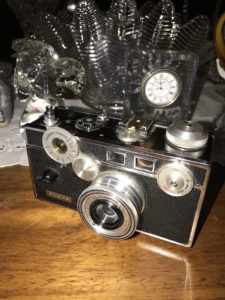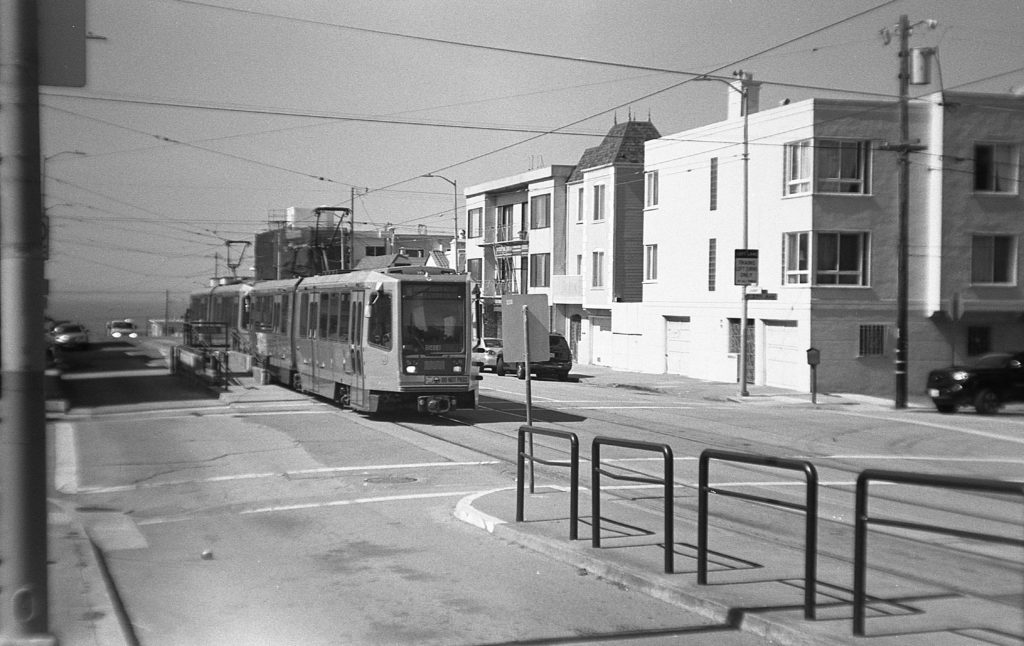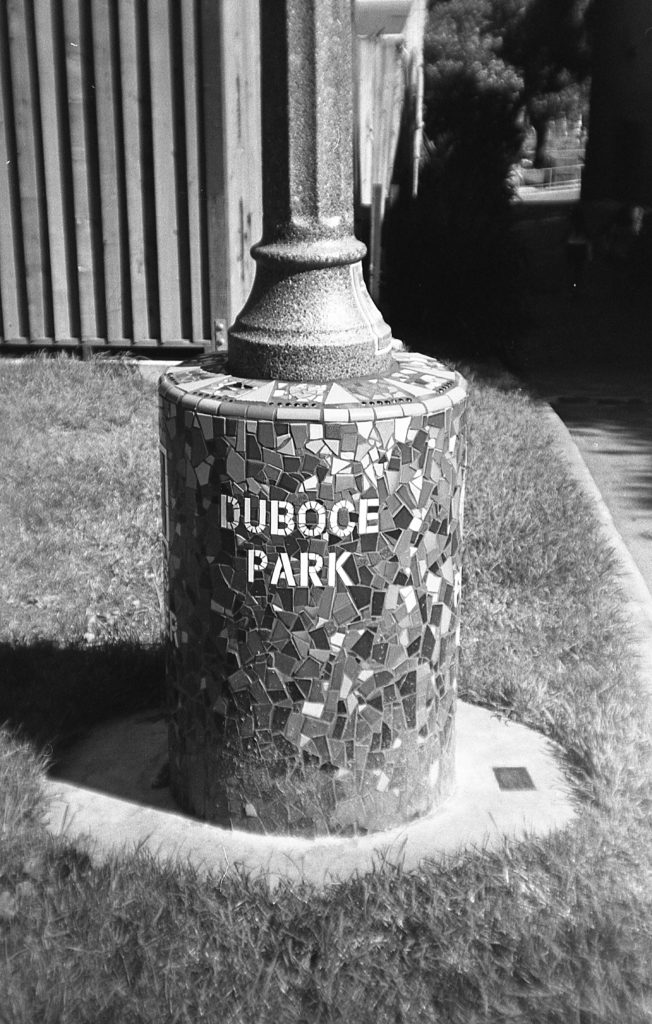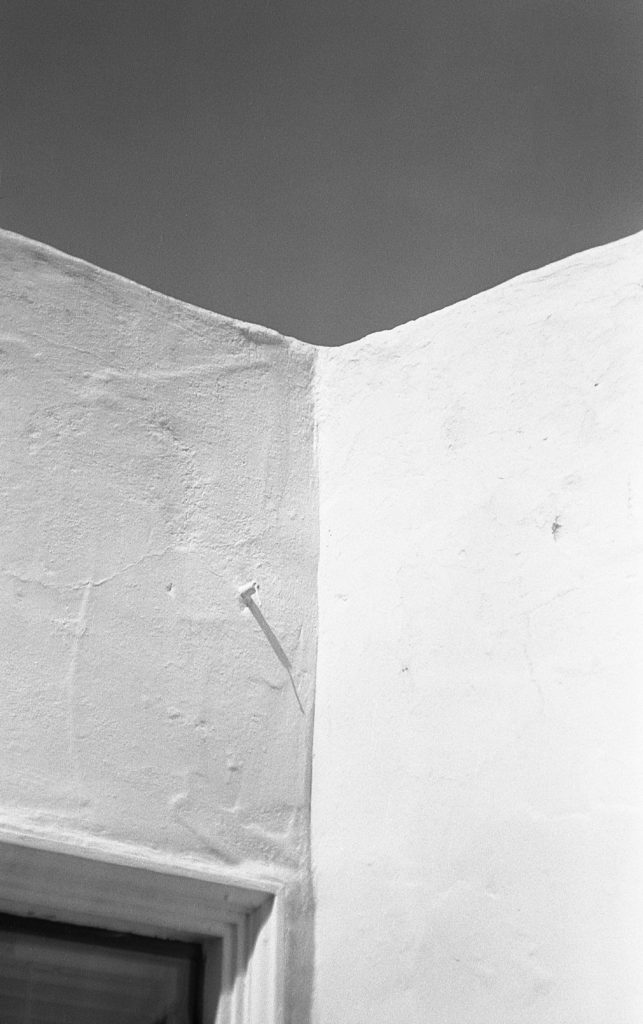The cheapest range finder that I could find on eBay was this Argus C3. I saw it used as a prop in the movie, Carol, and saw that World War II photos were taken with it by infantryman, Tony Vaccaro.

You can get this range finder right now on eBay for between $14.95 and $40.00. I got to spend a day shooting this wonderful piece of machinery lovingly named, “The Brick.”
Before I could shoot it, I had to adjust the focusing which was off. Youtube has a plethora of videos to help you with this and adjusting framelines if needed. Once the focus was adjusted, I loaded the camera with JCH Streetpan.
I made my way to the N-Judah Stop.

The shutter speeds for this camera are 1/300, 1/100, 1/50, 1/25 and 1/10. The f-stops for the 50mm lens it comes with are f3.5, f4, f5.6, f8, f11, and f16. The camera comes with what I discovered to be a single zone focus setting: f16 set at 15 feet will put everything from 8 feet to infinity in focus. This zone focus setting is indicated by a red and yellow arrow.
To take a photo requires the following steps:
- set the f-stop
- set the shutter speed
- compose the shot in one window
- in the window next to that, focus the frame lines
- cock the shutter
- take the shot
- press the film advance release button, and then
- wind to the next frame.
That’s over 8 steps! 4 steps if you’re zone focused and already cocked.
The Leica M film cameras, by comparison, combine with composition and frame line window into one, and doesn’t require shutter cocking. Leicas require 4 steps, or 2 steps if zone focused. I found that most of the action already got away from me, but with practice, it would be possible to take street photos where you have to be quick. Unfortunately, you can’t shoot like Winogrand with this camera where you can shoot 1 to 2 shots a second and let a scene unfold in front of you. If you’re quick, you can maybe do a shot every 5 seconds.
I found the 50mm lens to be very soft past the center area, but such an effect would be great for portraits!

Like the Leica M-A which I reviewed earlier, this had a time machine effect. I found myself thinking of an earlier time more often than not.

When I developed my roll of film, I realized that because of how it loads film on the right side, all the horizontal images were upside down. This doesn’t happen with left side loaded cameras.
Overall: This is the best value range finder that you’ll ever find. Spend 30 or 50 bucks more for a Pentax K1000 or Canon AE-1 to get an SLR with an optically superior 50mm and a light meter.
Pros:
Cheap
Solid, all metal construction
Made in America
Great for beginners
Beautiful, retro design
Cons:
Most of the items sold an eBay are 60 or more years old. They might all require a CLA.
The 50mm “kit lens” is very soft past the center
Too many steps to take a shot
No light meter
You got a bad example or a film flatness issue. At F16 the Argus Cintar lens is tack sharp edge to edge normally.
I agree with Edward. The Argus Cintar 50mm lens with mine is very good. Wide open at f3.5 it is a bit dreamy around the edges but after that things get really good. F/5.6 and 8 are amazing.
I am not sure why you don’t get sharp images with your Argus. At f8 the 50mm Cintar lens on my Argus C3 is just as sharp as the 50mm Leica Elmar on my Leica IIIa. There are certainly easier cameras to use but the Argus is very capable of giving you really good photographs if you take your time. Fortunately it is pretty easy to do your own cleaning and adjusting on this camera. The information found here will get you started. http://www.arguscg.org/manuals/c3/schenken-repair/